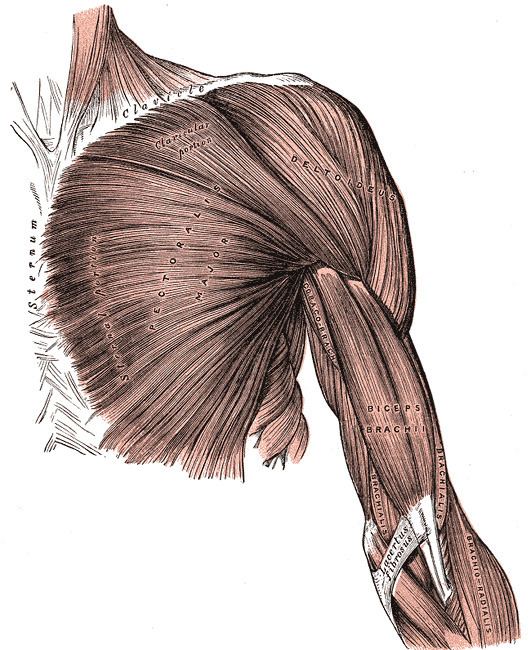TA A04.6.02.016 | FMA 39085 | |
 | ||
Latin aponeurosis musculi bicipitis brachii | ||
The bicipital aponeurosis (also known as lacertus fibrosus) is a broad aponeurosis of the biceps brachii which is located in the cubital fossa of the elbow and separates superficial from deep structures in much of the fossa.
The bicipital aponeurosis originates from the distal insertion of the biceps brachii. While the tendon of the biceps inserts on the radial tuberosity, the aponeurosis reinforces the cubital fossa, and helps to protect the brachial artery and the median nerve running underneath. This protection is important during venipuncture (taking blood) from the median cubital vein.
It is one structure that has to be incised during fasciotomy in the treatment of acute compartment syndrome of the forearm and elbow region.
Some individuals (about 3% of the population) have a superficial ulnar artery that runs superficially to the bicipital aponeurosis instead of underneath it. These individuals are at risk for accidental injury to the ulnar artery during venipuncture.
